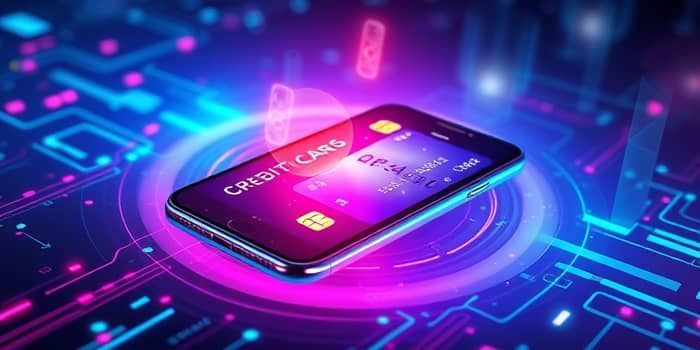In an age where our devices manage almost every aspect of daily life, digital wallets have emerged as a cornerstone of modern payment systems. By replacing bulky cash and plastic cards with a seamless electronic alternative, they are transforming how we shop, travel, and even access services.
Definition and Evolution of Digital Wallets
At its core, a digital wallet is an electronic version of a physical wallet. It stores credit cards, debit cards, gift cards, loyalty passes, and even digital documents such as boarding passes or health passes on a smartphone, computer, or wearable device.
What began as simple online payment gateways has evolved into robust applications that integrate with point-of-sale terminals, mobile apps, and even Internet of Things (IoT) devices. Early adopters only used them for online checkouts, but today they power contactless in-store transactions and peer-to-peer transfers.
How Digital Wallets Operate: Under the Hood
When users first set up a digital wallet, they input personal details and card information. This data is then encrypted and securely stored on the device or in the cloud. Access is protected by authentication methods like PINs, passwords, fingerprints, or facial recognition.
To complete a transaction, the wallet communicates with the merchant’s system through several possible methods:
- Near-field communication (NFC) – Allows contactless payments by holding a device close to the terminal.
- Magnetic Secure Transmission (MST) – Emulates a card’s magnetic stripe for older terminals.
- QR codes – Scanned by the device’s camera to initiate payments in apps or at kiosks.
Here is the typical transaction flow when you pay in-store:
1. Your device transmits a unique transaction-specific security token to the payment terminal.
2. The terminal forwards this token to the payment processor, which routes it to the issuing bank for authorization.
3. The bank verifies the token, approves the transaction, and notifies the processor, which confirms the sale to the merchant.
This tokenization ensures that your real card number is never exposed during the exchange.
Types of Digital Wallets
Digital wallets come in several varieties to fit different needs, from retailer-specific solutions to universal payment tools.
Key Features and Real-world Uses
Beyond storing payment cards, digital wallets often hold boarding passes, concert tickets, hotel reservations, gift cards, coupons, and loyalty rewards. Some advanced solutions even support digital IDs and health credentials, streamlining identity verification in travel or healthcare settings.
In the real world, users enjoy:
- Faster checkouts at retail stores and online platforms.
- Effortless peer-to-peer transfers to friends and family.
- Instant access to event tickets and membership cards without printing.
Security Measures and User Protection
Security lies at the heart of digital wallets. They leverage several layers of defense:
1. Encryption protects stored data so it remains unreadable without the correct key.
2. Tokenization replaces sensitive card numbers with a unique digital token during transactions.
3. Biometric or PIN-based authentication prevents unauthorized access to the wallet app.
Together, these measures deliver protection against fraudulent transactions and reduce the risk associated with lost or stolen physical cards.
Advantages and Limitations
Digital wallets offer undeniable benefits:
- Convenience: Carry everything you need on a single device.
- Enhanced security: Your card details are never exposed.
- Unified organization: Tickets, loyalty cards, and passes in one place.
However, there are a few limitations:
- Acceptance: Not all merchants support every type of digital wallet.
- Compatibility: Some wallets are restricted to specific device ecosystems.
- Platform limits: Peer-to-peer services may only allow transfers within the same network.
The Future of Digital Wallets
The evolution of digital wallets shows no signs of slowing. Expect to see deeper integration with IoT devices, enabling payments directly from smart fridges, wearable devices, and even connected vehicles. The rise of blockchain technology may also spur new innovations in decentralized finance and crypto-based wallets.
Regulatory frameworks are evolving to ensure user data protection and anti-money laundering compliance, while global adoption surges as more merchants and consumers embrace contactless, secure, and efficient payment methods.
Ultimately, digital wallets represent a major stride toward a cashless society. By blending convenience, security, and versatility, they are reshaping how the world transacts, making payments faster, safer, and more integrated with our daily lives.
References
- https://www.nerdwallet.com/article/credit-cards/what-is-a-digital-wallet-and-how-does-it-work
- https://stripe.com/resources/more/digital-wallets-101
- https://www.techtarget.com/whatis/definition/digital-wallet
- https://www.citizensbank.com/learning/is-digital-wallet-safe.aspx
- https://www.bankrate.com/banking/what-is-a-digital-wallet/
- https://tipalti.com/blog/digital-wallet/
- https://www.investopedia.com/terms/d/digital-wallet.asp
- https://bettermoneyhabits.bankofamerica.com/en/personal-banking/what-is-a-digital-wallet










